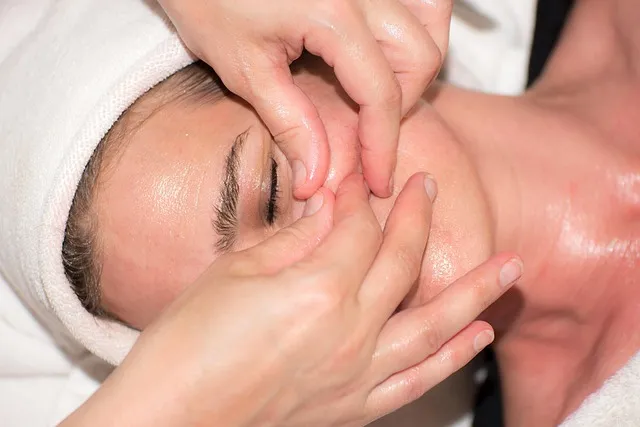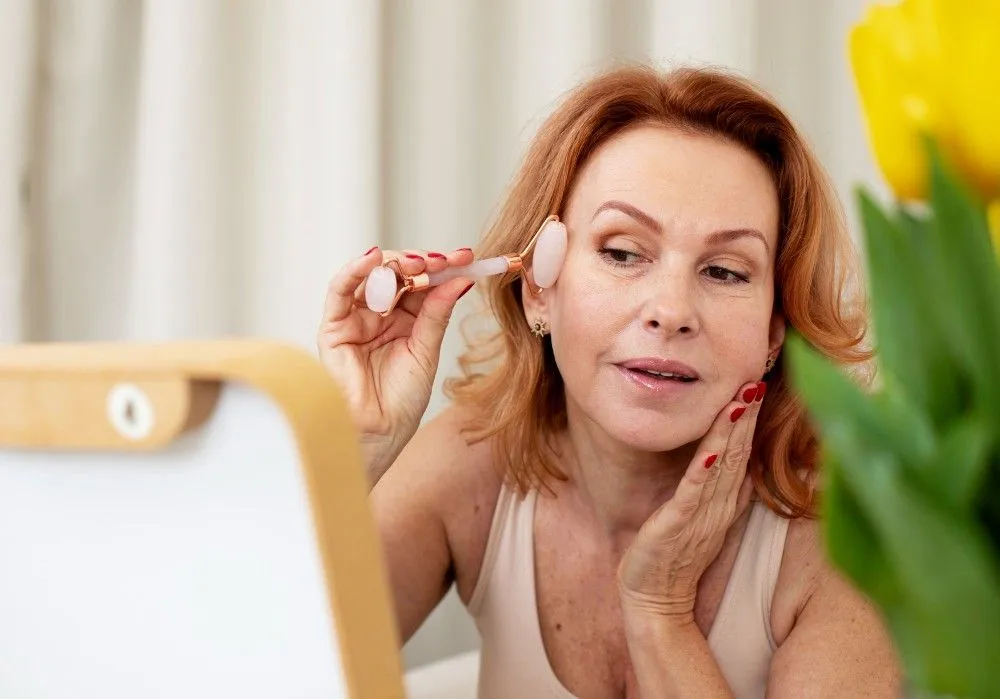Tired of waking up with with puffy, swollen under-eyes? Eye bags can make you look older and more fatigued than you feel. Whether they result from aging, genetics, lifestyle habits, or fluid retention, you don't have to live with them. If you are wondering how to remove eye bags permanently, you are in the right place. In this post, we’ll explore permanent treatments, effective non-surgical options, and proven home remedies to reduce puffiness. Plus, we’ll share prevention tips to stop them from coming back.
Let’s get started!
How to Remove Eye Bags Permanently?
If you’re fed up and looking for a long-term solution, blepharoplasty (lower eyelid surgery) is the best option. Let's learn what it is, how it works, and its benefits.
What is Blepharoplasty?
Blepharoplasty or lower eyelid surgery is a permanent eye bag removal treatment that involves the readjustment of fat present in the lower eye area. It assists in removing excess fat and making the skin and muscles smooth under the eyes.
Procedure Overview:
-
Anesthesia: Surgeons give local or general anesthesia based on the type of the surgery.
-
Incisions: They made incisions inside the eyelid or below the lower lashes to take out the repositioned fat.
-
Fat Removal or Redistribution: Fat is completely removed or readjusted to smoothen the under area of the eye and relieve puffiness.
-
Skin Tightening: The providers then remove the excess skin and tighten the remaining one for a smoother and more youthful appearance.
-
Closure: Using the fine, dissolvable sutures, the incisions are closed. In the case of lower blepharoplasty, no stitches are used.
Recovery & Results:
-
Healing Time: Bruising and swelling subside within 1-2 weeks.
-
Full Results: Prevents puffiness and sagging, giving full visible results in 2 to 3 months, enhancing the overall appearance of the lower eyelid area.
-
Longevity: Results last a lifetime, making it a permanent fix.
Non-Surgical Treatments to Reduce Eye Bags
If you’re not ready for surgery, several minimally invasive options can improve the appearance of eye bags. Though non-surgical methods can't treat eye bags permanently, they can help smoothen out the appearance in the under-eye area. Those options are:
1. Dermal Fillers (Tear Trough Fillers)
Filler treatment involves the use of injectable dermal fillers (usually hyaluronic acid) that give volume to the under-eye area and reduce puffiness.
What it Does: Injectable fillers (like hyaluronic acid) add volume, smoothing out hollows under the eyes.
-
Recovery Time: Mild swelling or bruising that may go away within a few days.
-
Results: Immediate improvements, giving a natural and smooth look.
-
Longevity: Results can last for 6-12 months, depending on the type of filler used.
2. Laser Resurfacing
This is a non-invasive cosmetic treatment for eye bags that utilizes laser technology to improve skin in the under-eye area and increase collagen production which gives firmer skin.
-
How It Works: A doctor uses an erbium or fractional CO2 laser that is targeted on the skin area around the eyes under the influence of a numbing cream. The lasers make micro-injuries that activate collagen production and tighten the skin to prevent puffiness, wrinkles, and fine lines.
-
Recovery Time: Mild swelling and redness subsides within a few days.
-
Results: Provides long-lasting improvements with multiple sessions.
-
Longevity: Results may last for about 3-5 years, depending on the skin type and sun exposure.
3. Chemical Peels
This treatment involves the use of a chemical solution (like salicylic acid or glycolic acid) for exfoliating the skin and removing dead cells that support the growth of fresher and smoother under-eye area.
-
How It Works: The providers apply the chemical solution to the under-eye area after applying a numbing cream. This helps peel off the top layers and reveal the new brighter and tighter skin, thus, lessening eye bags.
-
Recovery Time: Mild redness or peeling will recover within a few days to one week.
-
Results: Slow results over multiple weeks with long-lasting effects.
-
Longevity: The results can last for about 6 months, depending on the depth of the peel.
4. Microneedling
The safe method to improve the look of the under-eye area that involves the rolling of the fine needle over the affected area.
-
How It Works: The provider applies a numbing cream around the eye area and gently rolls a fine needle over the eye area, giving micro-injuries to the skin surface. This triggers the healing process of the skin which improves firmness and elasticity and reduces eye bags.
-
Recovery Time: Mild redness, swelling, or peeling may go away within some days or a week.
-
Results: Slow improvements in the texture and tone of the under-eye skin area. Visible results will be seen after 2-3 weeks.
-
Longevity: The results will last for months to years with the most noticeable results around 3 to 6 months.
Home Remedies to Reduce Eye Bags Naturally
If you prefer natural solutions, these home remedies can temporarily improve puffiness:
1. Try a Cold Compress:
It can help prevent puffy eyelids. Just apply a cold compress or an ice pack to your eyes, reducing the puffiness, swelling, and dark circles.
2. Apply Tea Bags
The anti-inflammatory and antioxidant properties of tea bags increase circulation, fixing under-eye bags. Just steep the tea bag in hot water, allow it to cool down, and then, apply it to the eyelids for some minutes.
3. Use Cucumber Slices
The anti-inflammatory effects of cucumber can naturally reduce eye swellings. Use chilled cucumber slices as their cooling effect tightens the skin.
4. Apply Eye Cream
Choose creams with ingredients like retinoids, Vitamin C, A, and E, green tea, and caffeine as they are specially formulated to reduce under-eye puffiness and darkness temporarily.
5. Wear Sunscreen Daily
Apply sunscreen with an SPF of 30 or more to keep the delicate eye area protected from harmful UV rays and associated damage.
6. Stay Hydrated
Consume a lot of water throughout the day to reduce puffiness. According to the National Institute of Health, it is recommended to drink 2-3 liters for men and 1.5-2.2 liters for women daily.
7. Consume Collagen-rich Foods
Foods like berries, leafy greens, avocados, nuts, seeds, and citrus fruits provide sufficient collagen that tightens the skin and makes the skin healthier.
8. Use Caffeine-Based Products
Caffeine helps compress blood vessels and relieve swelling which makes the under-eye area less puffy.
What Causes Under-Eye Bags?
These are the potential causes of under-eye bags:
-
High-salt diet- that causes water retention, contributing to swelling.
-
Allergies- cause inflammation and congestion, leading to under-eye puffiness.
-
Genetics- this issue might run in the family.
-
Aging- loses firmness around eye skin and muscles.
-
Dehydration- contributes to fluid retention around the eyes which leads to puffiness.
-
Sun Damage- triggers excessive melanin that results in dark patches under the eye area.
-
Smoking- damages the skin and speeds up the aging process, leading to eye bags.
-
Underlying Medical Issues- diabetes, eye infections, or renal disease might also contribute to eye bags.
Understanding the root cause of your under-eye bags helps you choose the right treatment:
How to Prevent Eye Bags from Coming Back
Once you’ve treated your eye bags, follow these steps to prevent them from returning:
-
Get Enough Sleep: Getting quality sleep for at least 8 hours can reduce puffiness.
-
Limit Salt Intake: Avoid excessive intake of salty foods such as instant pudding, canned soup, or frozen meals to prevent water retention and worsening of puffiness.
-
Stay Hydrated: Drink a lot of water a day to maintain hydration and prevent fluid retention.
-
Elevate the Head While Sleeping: Keep an excess pillow under your head to slightly elevate it which helps prevent fluid accumulation under the eyes.
-
Take Allergy Medication: In case of allergies, try antihistamines to alleviate swelling and inflammation but, discuss with a doctor first.
-
Wear Sunscreen: Protect the skin from sun exposure by applying sunscreen all over the face to avoid premature aging & sun damage.
-
Avoid Excessive Alcohol and Smoking: These substances can increase the risk of skin aging and also lead to under-eye bags.
-
Manage Stress: Practice relaxation techniques like meditation or yoga to relieve stress and its impact on skin health.
-
Use Eye Creams: Apply serums and creams containing hyaluronic acid or caffeine to enhance under-eye skin firmness and tone.
When Should You See a Doctor?
Seek help from professionals in case you experience:
-
Persistent eye bags with no improvement with at-home treatments or lifestyle changes
-
Discomfort in under eye area or vision problems
-
Redness, pain, and swelling
-
Sudden darkening or excessive puffiness under the eyes.
A doctor can determine if your eye bags are due to underlying health issues.
Final Thoughts
If you’re searching for how to remove eye bags permanently, blepharoplasty is the only long-term solution. However, non-surgical treatments like fillers, lasers, and microneedling can provide temporary but effective improvements. For mild puffiness, home remedies and lifestyle changes can help reduce their appearance. The key to permanently removing eye bags is a combination of treatments, skincare, and healthy habits to keep your under-eyes youthful and refreshed!
READ ALSO: Sunken eyes: Causes, How They Look and Treatments
Frequently Asked Questions
What vitamin gets rid of bags?
Vitamin C promotes collagen production, protects from UV rays, and reduces skin aging, thus, contributing to the disappearance of eye bags.
Do eyebags ever go away?
Mild eye bags can be resolved with home remedies and lifestyle changes, however, more noticeable ones need professional treatment like surgery.
What is the best product for bags under your eyes?
The Olay Ultimate Eye Cream is the best product for eye bags that help reduce puffiness.
What drugs cause bags under the eyes?
The side effects of Aczone, Allopurinol, Anticonvulsants, Imuran, Flagyl, and nonsteroidal anti-inflammatory drugs can lead to eye bags.
Does hyaluronic acid get rid of bags?
Yes, by making the skin plumpy and smoothing out the fine lines, it can get rid of eye bags.
Reviewed by







